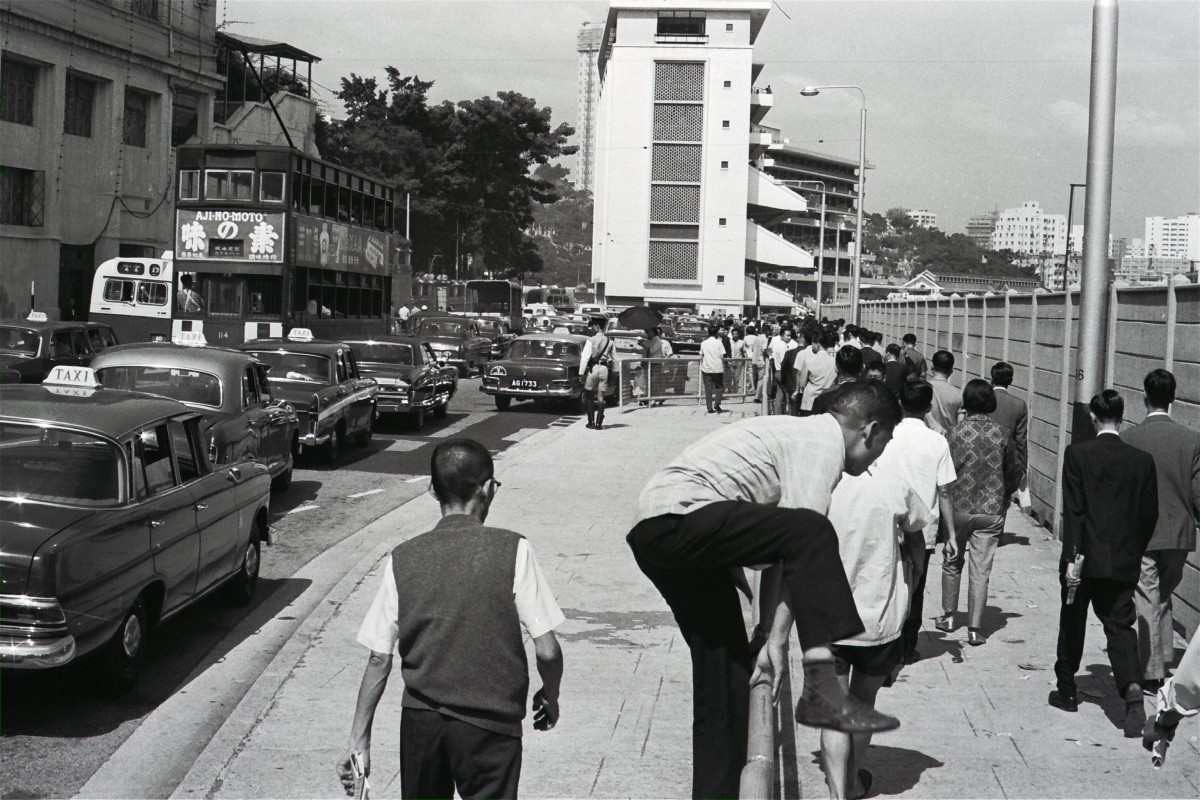Social media has many popular uses, but one that has become popular recently is the sharing of photos from the past.
The Twitter account @HistoricalPics has over two million followers, while a slew of similar accounts attract plenty of retweets and shares.
For those who were there, there is a sense of nostalgia, a reminder of how the world used to be. And for those of us who weren’t there, it is more fascination and even bemusement that keeps us glued.
So we got to thinking – what pictures have been published in the South China Morning Post tell the story of horse racing in Hong Kong? We have trawled through the photo archives and found some of the best from a modern perspective – some that amaze, others that are just too funny not to share.
The first picture, taken before the start of the season in August, 1986, created a stir when shown to trainers at Happy Valley on Wednesday night. On the left is John Moore, preparing for his second season as a trainer, while second from left is a teenage Caspar Fownes, who had just started as an assistant to his father Lawrie (who is standing behind). Melbourne Cup-winning jockey Wayne Harris is on the right. Clearly, the short shorts worn high were in fashion.
Almost 30 years later, Lawrie was at the forefront of celebrations as Caspar claimed his third championship last July.
The first photo of John Moore in the SCMP came in 1971, when the son of the legendary George Moore turned his hand to riding – albeit briefly.
A year later, a piece about 16 boys accepted into the Apprentice Jockey School at Beas River featured a picture of one “Anthony Cruz”. Little did they know that Tony Cruz would go on to be the biggest name in Hong Kong racing.
Moore and Cruz weren’t the only jockeys to head into training, though. 2012-13 champion trainer Dennis Yip Chor-hong also had a career in the saddle, riding 59 winners between 1984 and 1993. Here, an 18-year-old Yip (left) had just won a cup race on Alex Wong Siu-tan’s Fair Trader in 1985.
Sometimes, it is a case of not realising the significance until much later. This was the first published photo of Douglas Whyte, taken on his first morning at Sha Tin trackwork in August 1996.
It was a similar case with John Size, the Australian trainer looking like the Lone Ranger after his first horse trialled in August 2001.
River Verdon became the first horse to win the Hong Kong Triple Crown – the Stewards’ Cup, the Gold Cup and the Champions & Chater Cup – in 1992. To this day, he remains the only horse to complete the treble. At his next start, he would become the first Hong Kong-trained horse to compete in the United States, running 11th to Dear Doctor in the Arlington Million. He also became Hong Kong’s first runner in both the Cox Plate and Melbourne Cup in 1994, finishing 11th to Solvit and 20th to Jeune respectively.
These days, a “stuffed” River Verdon sits on display at the Hong Kong Racing Museum at Happy Valley, while his owner, former HKJC chairman Ronald Arculli (pictured below with wife Johanna in 2009), has achieved greater globetrotting success with Red Cadeaux.
Hong Kong’s first champion racehorse, though, was Co-Tack, trained by Wong Tang-ping and ridden for the most part by Tony Cruz. It took ridiculous handicaps of 154 pounds to stop him – and even then, he still managed a three-length win under the impost. He returns after winning the 1983 Champions & Chater Cup by four lengths.
As a trainer, Cruz would have his own superstar – sprinting sensation Silent Witness, who won his first 17 races before being beaten in the Champions Mile by stablemate Bullish Luck.
Here, Cruz – signature coif perfectly in place – gives Silent Witness a pat after he won his first start on Boxing Day 2002 under Felix Coetzee.
And the mafoo leading the debutant? A young Chris So Wai-yin, now in his second season of training.
There was a time – long, long ago – when Happy Valley was not surrounded by skyscrapers. This was the earliest photo of the racecourse published in the SCMP in 1906.
On Derby Day 1918, an enormous fire caused the grandstand to collapse in what was one of Hong Kong’s deadliest tragedies with more than 600 casualties.
By 1964, capacity at Happy Valley was overflowing and so the search for a new racecourse location began.
The new site was selected on a flat plain at Sha Tin.
In 1978, racing began at the facility in the New Territories, with the Governor Sir Murray MacLehose declaring the course open.
Runners parade before the first race at Sha Tin in October 1978.
Meanwhile, Happy Valley became a course with two tracks – grass on the outside, sand on the inside. The sand track was converted to the synthetic Equitrack in 1989. Hard to believe two tracks could fit around such a tight course!
In 1995, the course staged its last meeting before converting to the all-grass track which currently exists. There was such a rush to get in, the gates closed an hour before the first and there was a surge of unhappy punters at the top of the straight.
We will keep looking through our archives for more gems, but there's every chance in a couple of decades, we will look back at pictures of Able Friend and Designs On Rome with the same nostalgia that comes from some of these images.






































